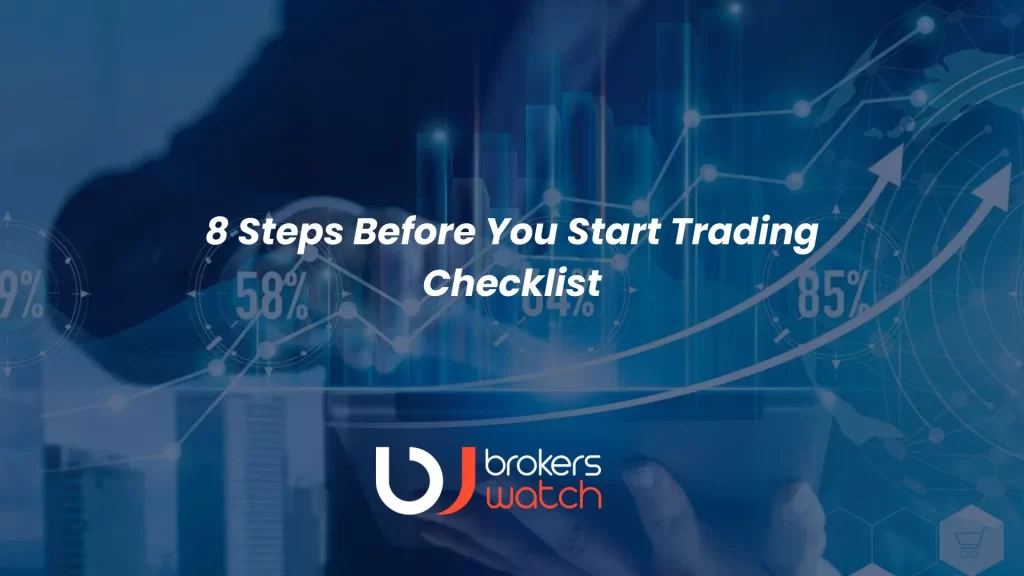8 Steps Before You Start Trading Checklist
Do you know that is important to have a stock trading checklist before making any trades? It is crucial to have a comprehensive checklist before entering into any trades, as it enables traders to maintain discipline, adhere to the trading plan, and enhance their confidence.
It’s important to keep in mind that starting well is often key to winning half the battle! Consequently, maintaining a trading checklist helps traders create a list of questions that need to be answered before executing a trade.
But don’t confuse trading plans with checklists. A trading plan refers to a larger picture, for example, deciding which market you want to trade and which analytical approach you want to follow. On the other hand, a checklist, focuses on each trade and the conditions that must be met before executing a trade order.
So, in this article we are going to discuss about the 8 steps before you start trading checklist that you should check before execute any orders.
Here’s Your 8 Steps Before You Start Trading Checklist
#1. Is the market in a trading range or trending?
As part of their trading plan, traders should assess whether a stock is exhibiting a strong trend and determine if they want to trade in line with that trend. Some stocks tend to trade within a range, and oscillating indicators such as RSI, CCI, and Stochastic can be used to trade in such markets. Therefore, it’s essential to check if a stock is currently trading within a range or trending, and whether trading in ranged or trending markets aligns with your trading plan.
#2. Is there any indicator for support and resistance?
Before executing a trading order on a particular stock, you should also check if there is a nearby support or resistance level. Price action usually tends to respect certain price levels for many reasons, and we need to be able to identify those levels. A trader does not want to take his position long when a major resistance is nearby.
Similarly it is happening, when prices typically bounce back after hitting key support levels. Trend traders should be on the lookout for breakouts at these levels as they suggest the market may move into trend.
#3. Are the indicators confirming the price action?
Traders should note that indicators help traders confirm trades with high probability. Depending on the trading plan and strategy, a trader should have 2-3 indicators that complement his trading strategy. You should not complicate your analysis by adding multiple indicators to a single chart. Analytics should be kept clean, simple, and at a glance.
Also, it is suggested not to use 2-3 indicators in the same group. For example, it is always recommended to use a volatility indicator like Bollinger Bands together with a momentum indicator like the Relative Strength indicator. Before executing a trader’s order, it should be checked whether these technical indicators confirm the trading signal.
#4. What is your risk/reward ratio?
Risk-reward ratio refers to the ratio of pips a trader is willing to risk to reach his goal. A trader should have a positive risk-reward ratio. The ratio 1:2 means that the trader risks half of the profit if the trade succeeds. As such, traders should consider the risk-reward ratio before executing any trading order.
#5. How much capital are you risking?
Before placing an order, you should ask yourself how much capital you are willing to risk on a single trade. A trader may put all his capital into a single trade and start draining his account if he is too confident in the trade.
This can be avoided by limiting the portion of capital used in a single trade. Also, a stop can be placed on all trades so that the total risk does not exceed his 5% of the account balance.
#6. Are there any major economic announcements that could affect trade?
You should check to see if there are any economic releases that may affect the price action of the particular stock you are trading. Economic data such as GDP, CPI, PMI, and car sales can have a significant impact on the prices of stocks and indices. That’s why we need to keep an eye on the economic indicators that will be announced in the near future.
#7. If the prices move in the opposite direction, what exit strategy should I employ?
Our trades are not always correct and not always profitable. Therefore, you should always have a backup plan in case the price does not meet your expectations.For this purpose, you should always place a stop order when entering a position. That way you can avoid losing too much. The Stop Loss price can be determined in many ways. Like, using support or resistance levels, Fibonacci levels, previous candlestick lows, etc. You can also read our blog on how to set a stop loss on your trades. Understand how stop loss orders are priced.
#8. Are you following your trading plan?
Finally, before placing a trading order, ask yourself if the order fits your trading plan. One should not deviate from their trading plan as this will only lead to mixed results and frustrate the trading process. Please note that you should not trade unless you have completed the trading checklist and verified that you are ready to trade.
Conclusion
It is important to note that having a checklist does not guarantee all trades will result in profits. Rather, it can help traders adhere to their trading plan, maintain consistency, and avoid impulsive or reckless trades. We hope you found this blog informative and will apply the knowledge in the practical world.
Please share it with your loved ones to help us achieve our mission of promoting financial literacy


